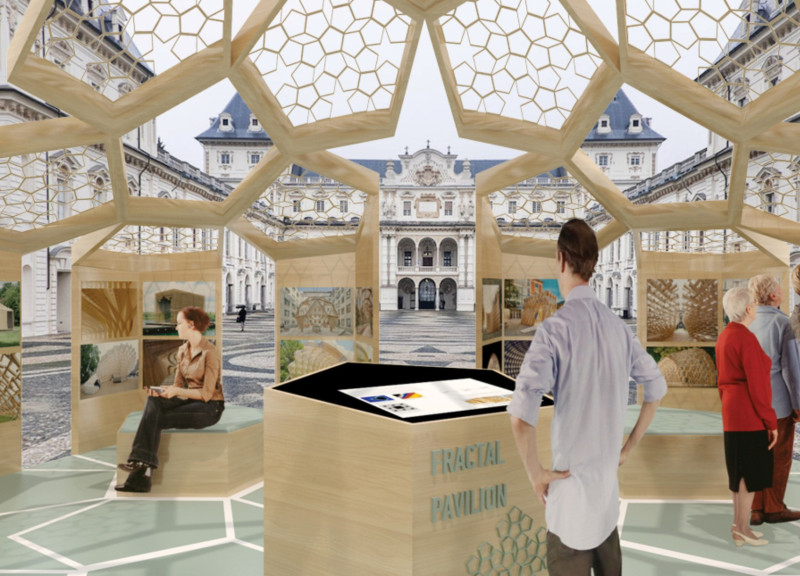5 key facts about this project
The Fractal Pavilion is a contemporary installation situated in the internal yard of the Faculty of Architecture in Turin, Italy. Designed as a temporary structure, it engages with themes of geometry and materiality. The pavilion blends design with function, serving as an exhibition space and a platform for exploring the versatility of timber as a building material.
Fractal Geometry
The design capitalizes on the principles of fractal geometry, utilizing self-similar patterns to shape the space. These patterns start at the ground level and extend upwards through seating modules and a central display stand. This spatial organization fosters a dynamic environment for visitors, encouraging exploration and interaction from various perspectives.
Structural Components
Timber serves as the primary material in the pavilion's construction, chosen for its ecological benefits and visual appeal. The timber walls provide essential support while also acting as visually striking backdrops for exhibition panels. This combination highlights the practical use of timber, demonstrating its relevance and adaptability in modern architectural practices.
Self-Supported Structure
The pavilion develops into a self-supported grid-shell, which showcases the recursive nature of fractal principles. The repetitive geometric forms echo the idea of self-similarity, transforming complex theories into a practical, usable space. This approach underscores the structural integrity of the pavilion while presenting a coherent visual experience.
Interactive Features
At the heart of the pavilion, an interactive display introduces the theoretical ideas behind the design. This feature invites visitors to engage with fractal geometry, providing a hands-on way to understand its concepts. The pavilion not only serves its purpose as a functional space but also enriches the educational experience for visitors and students alike.
Natural light filters through a series of perforations in the panels, creating shifting patterns of light and shadow. This adds to the atmosphere, enhancing the experience and inviting deeper reflection on the relationship between light and structure.



















































